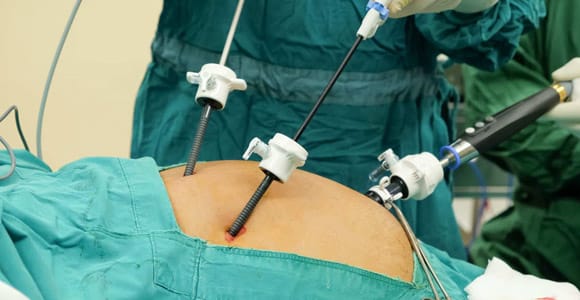Gallstones, small solid deposits that form in the gallbladder, can vary in size and cause discomfort and complications for some individuals. In this article, we will explore the causes, symptoms, and treatment options for gallstones, shedding light on this common health issue.

TABLE OF CONTENTS
Understanding the Gallbladder and its Function
What are Gallstones?
Types of Gallstones
Causes of Gallstones
Risk Factors for Gallstones
Symptoms of Gallstones
Diagnosing Gallstones
Treatment Options for Gallstones
Non-surgical Approaches for Gallstones
Surgical Interventions for Gallstones
Lifestyle Changes to Prevent Gallstones
Diet Recommendations for Gallstones
Complications Associated with Gallstones
When to Seek Medical Attention
Conclusion
FAQs (Frequently Asked Questions)
UNDERSTANDING THE GALLBLADDER AND ITS FUNCTION
The gallbladder, an integral part of the digestive system, stores and concentrates bile, a digestive fluid produced by the liver. Bile aids in the breakdown and absorption of dietary fats. When we consume fatty foods, the gallbladder releases bile into the small intestine, facilitating digestion.

WHAT ARE GALLSTONES?
Gallstones are hardened deposits that form in the gallbladder or bile ducts. These stones can vary in number and size, leading to blockages or irritation in the gallbladder or bile ducts. They are primarily composed of cholesterol or bilirubin, a pigment produced during the breakdown of red blood cells.
There are two main types of gallstones: cholesterol gallstones and pigment gallstones. Cholesterol gallstones, yellow-green in color, are the most common. On the other hand, pigment gallstones are smaller and darker, often brown or black.

CAUSES OF GALLSTONES
The precise causes of gallstone formation are not fully understood, but several factors contribute to their development. These factors include an excessive amount of cholesterol or bilirubin in bile, reduced gallbladder emptying, changes in the chemical composition of bile, and gallbladder inflammation.

RISK FACTORS FOR GALLSTONES
Certain factors increase the risk of developing gallstones. Women, older adults, individuals who are overweight or obese, those who experience rapid weight loss, and those with a family history of gallstones are more prone to developing them. Additionally, certain ethnic groups and people with diabetes have an increased risk.

SYMPTOMS OF GALLSTONES
While gallstones may not always cause symptoms, they can lead to discomfort when they do. Common symptoms include abdominal pain, particularly in the upper right side, back pain between the shoulder blades, nausea, vomiting, bloating, indigestion, jaundice (yellowing of the skin and eyes), and clay-colored stools.

DIAGNOSING GALLSTONES
Healthcare professionals use various tests to diagnose gallstones. These tests may include ultrasound, blood tests to check bilirubin or liver enzyme levels, and imaging techniques such as CT scans or MRIs to obtain detailed images of the gallbladder and surrounding organs.

TREATMENT OPTIONS FOR GALLSTONES
The treatment approach for gallstones depends on the severity of symptoms and complications. In some cases, no treatment is necessary if the stones are not causing problems. However, when symptoms are present or complications arise, intervention may be required.

Non-Surgical Approaches For Gallstones
Non-surgical approaches are often employed to manage gallstones. Medications can be prescribed to dissolve small cholesterol gallstones over time. Oral bile acid therapy involves taking medications to dissolve cholesterol gallstones. Extracorporeal shock wave lithotripsy (ESWL) is a non-invasive procedure that uses shock waves to break down gallstones.

SURGICAL INTERVENTIONS FOR GALLSTONES

Surgery may be necessary to remove gallstones or the entire gallbladder. Laparoscopic cholecystectomy is a minimally invasive procedure that removes the gallbladder through small incisions. Open cholecystectomy, on the other hand, is performed in more complex cases or when the gallbladder is severely inflamed. Endoscopic retrograde cholangiopancreatography (ERCP) combines endoscopy with X-rays to locate and remove gallstones from the bile ducts.
LIFESTYLE CHANGES TO PREVENT GALLSTONES
Adopting certain lifestyle changes can help reduce the risk of developing gallstones. Maintaining a healthy weight, focusing on gradual weight loss, consuming a balanced diet rich in fruits, vegetables, and whole grains, limiting high-fat and cholesterol-rich foods, regular exercise, and avoiding crash diets or extreme fasting are recommended.
DIET RECOMMENDATIONS FOR GALLSTONES
Making specific dietary modifications can aid in managing gallstones. Increasing fiber intake, consuming healthy fats like olive oil and avocados, avoiding or limiting alcohol consumption, drinking plenty of water, and reducing the intake of processed and fried foods are some key recommendations.

COMPLICATIONS ASSOCIATED WITH GALLSTONES
If left untreated, gallstones can lead to various complications, including gallbladder inflammation (cholecystitis), bile duct blockage, infection of the bile ducts (cholangitis), pancreatitis (inflammation of the pancreas), and in rare cases, gallbladder or bile duct cancer.

WHEN TO SEEK MEDICAL ATTENTION
It is important to seek medical attention if you experience symptoms associated with gallstones. Regular check-ups with healthcare providers are recommended for individuals with a history of gallstones or related complications to monitor their condition.

CONCLUSION
Understanding the causes, symptoms, and treatment options for gallstones is essential for early detection and appropriate management. By adopting a healthy lifestyle, making dietary changes, and seeking timely medical attention, individuals can reduce the risk of gallstone-related complications and improve their overall well-being.
FAQS (FREQUENTLY ASKED QUESTIONS)
Q: What are the risk factors for gallstones?
Q: Can gallstones be prevented through diet?
Q: How are gallstones diagnosed?
Q: Are there any non-surgical treatment options for gallstones?
Q: What is the recovery process after gallbladder removal surgery?
Leave a comment